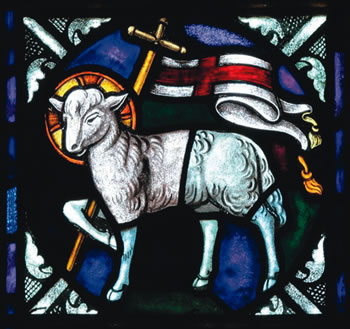
Victory belongs to the lamb – Saturday, 33rd week in ordinary time – Revelation 11:4-12 ( we will study this from verse 1)
If you have been studying this book with me you will recall that we are between the sixth (9:13) and the seventh ‘trumpet blast’(11:15). Between these trumpet blasts was an interlude with two narratives. Yesterday’s text spoke of the first part of that interlude which spoke of the scroll that was given to John. John was then asked to eat the scroll; a bitter-sweet scroll.
Today’s text is part of the second part of the interlude and describes the ‘two witnesses.’ John was given a measuring rod and was asked to measure the temple of God and the altar, which symbolizes the new Israel but he was to also measure those who worshipped there, namely the Christians. The measuring of the temple, an act similarly seen in the prophet Ezekiel (cf. Ez 40:3–42:20; 47:1–12; Zechariah 2:5–6) suggests that God will preserve the faithful remnant (cf. Is 4:2–3) who will remain true to Christ (Rev 14:1–5).
John was not to measure the court outside the temple or the court of the gentiles for that was ‘given to the nations to trample which they will trample for forty two months. The duration of forty two months is the duration of the vicious persecution of the Jews by the Greek king Antiochus IV Epiphanes (Daniel 7:25; 12:7). This persecution of three and a half years (half of seven years and counted as 1260 days in Rev 11:3; 12:6) became the prototype of periods of trial for God’s people (see Luke 4:25 or James 5:170). The reference in our text is not to the Jews being persecuted by the Greeks but to God’s people being persecuted by the Romans.
To this effect, God will grant two witnesses, the authority to prophesy for one thousand two hundred sixty days while wearing sack cloth. The two witnesses, wearing sackcloth symbolizing lamentation and repentance and cannot readily be identified. Do they represent Moses and Elijah, or the Law and the Prophets, or Peter and Paul? Most probably they refer to the universal church, especially the Christian martyrs, fulfilling the office of witness. The choice of two witnesses seems to match a Gospel requirement as in Mark 6:7 where the Lord sent them out in tow’s or as in John 8:17 where the testimony of two witnesses was valid.
Along with the two witnesses there is mention of two olive trees and two lamp stands that stand before the Lord of the earth. These are the martyrs who stand in the presence of the Lord. The imagery is taken from Zechariah 4:8–14, where the olive trees refer to Zerubbabel and Joshua. They are ‘protected’ from those who wish to harm them. The protective tools they have, like being able to open their mouth and consume their foes or to be able to shut the sky so that no rain may fall during the days of their prophesying, or the ability to turn water to blood and to strike the earth with every plague as often as they desire; these details are derived from stories of Moses, who turned water into blood (Ex 7:17–20), and of Elijah, who called down fire from heaven (1 Kgs 18:36–40; 2 Kgs 1:10) and closed up the sky for three years (1 Kgs 17:1; cf. 18:1).
Continue Reading
A bitter-sweet pill - Friday, 33rd Week in ordinary time – Revelation 10: 8-11 Yesterday we were in chapter five and today we jump to chapter ten. What links the…
[caption id="attachment_6672" align="aligncenter" width="520"] The Roman style architecture, gymnasium, and ruins at the ancient and Biblical city of Sardis in Turkey. [/caption] Some faked it, some did not make it -…
What is the message of the book of Revelation? - Monday, 33rd Week in ordinary time – Revelation 1:1-4, 2:1-5a The word ‘Revelation’, referring to the last book of the…

 Fr. Warner D'Souza is a Catholic priest of the Archdiocese of Bombay. He has served in the parishes of St Michael's (Mahim), St Paul's (Dadar East), Our Lady of Mount Carmel, (Bandra), a ten year stint as priest-in-charge at St Jude Church (Malad East) and at present is the Parish Priest at St Stephen's Church (Cumballa Hill). He is also the Director of the Archdiocesan Heritage Museum and is the co-ordinator of the Committee for the Promotion and Preservation of the Artistic and Historic Patrimony of the Church.
Fr. Warner D'Souza is a Catholic priest of the Archdiocese of Bombay. He has served in the parishes of St Michael's (Mahim), St Paul's (Dadar East), Our Lady of Mount Carmel, (Bandra), a ten year stint as priest-in-charge at St Jude Church (Malad East) and at present is the Parish Priest at St Stephen's Church (Cumballa Hill). He is also the Director of the Archdiocesan Heritage Museum and is the co-ordinator of the Committee for the Promotion and Preservation of the Artistic and Historic Patrimony of the Church.